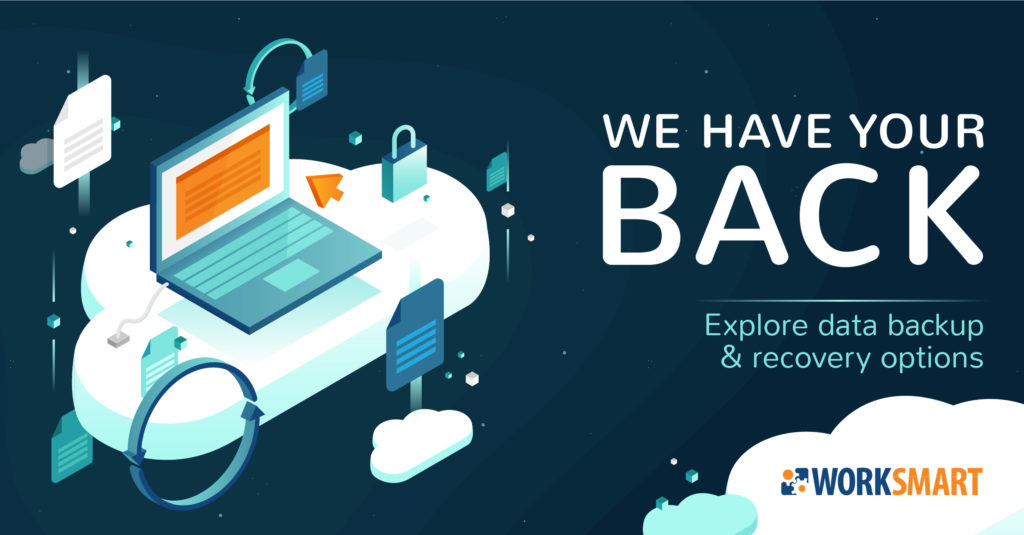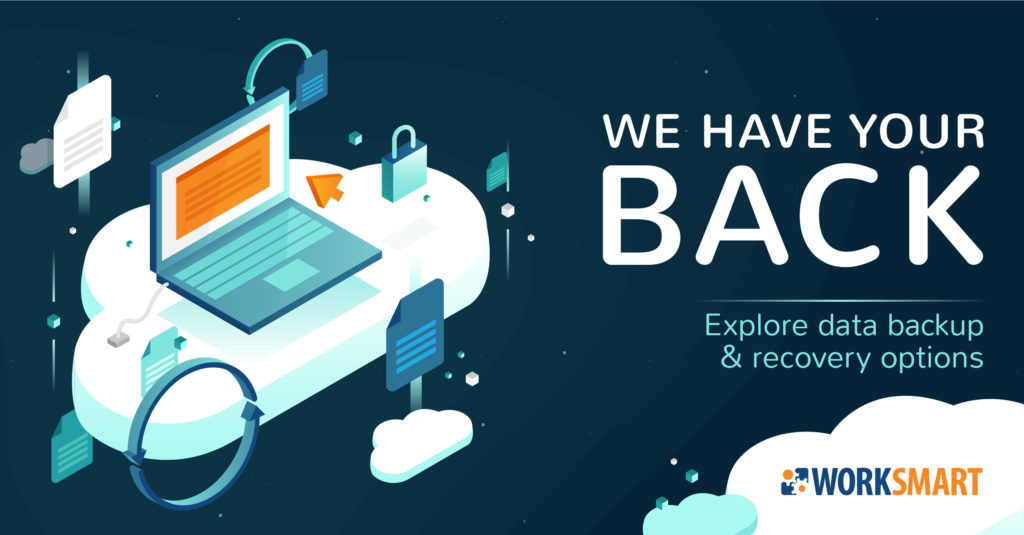Data Backup and Recovery is an important topic because, well, people lose things. Humans delete files by accident. Servers fail. Storms damage offices. All we can do is create a plan to recover quickly and get back to business. Read on about what losses you should consider. And check out this visual snapshot to help review data backup needs with your team.
WHAT IF YOU LOSE A FILE?
Workstation files—Your end users probably save important files to a server. That’s a good policy, but its success as a backup solution relies on every person saving their important documents to a server every time. Humans make mistakes, and a simple safeguard is to set up an automated file-level backup service (like WorkSmart’s DataSafe product) for employee workstations. DataSafe is especially important for executives or sales people who work out-of-the office regularly.
Server files—An onsite automated backup system (like one of WorkSmart’s DataVault products) is critical to making sure the files you store on servers can be restored in the event of a server failure. DataVault retains an image-level backup of a server, making server recovery faster.
Cloud-based files—You might already use Office 365’s OneDrive or Google’s G-suite to back up working files—especially shared files. But what if a file is permanently deleted from OneDrive or Google Drive? Backing up your cloud-based files is the best way to avoid accidental file loss in the cloud. It may sound redundant at first (because it is), but ask anyone who’s seen a file disappear from a cloud-based app and they’ll tell you to include cloud backup. Ours even backs up your SalesForce data.
WHAT IF YOU LOSE A SYSTEM?
We work hard to keep servers humming along, but despite best efforts, failures happen. If your business can’t continue without access to data while you wait to replace the faulty server, you need a backup solution that includes server virtualization.
With a file-level backup service, you know that the files are safe but you won’t be able to access them until you replace the faulty hardware and recreate your network environment. Are you willing to wait days or weeks to have a new server ordered, installed and your network environment configured? Only then will you be able to access those files again and get back to work. Image level backup with DataVault Premium lets us restore systems completely from the backup device, including the operating system. So your team can get back to work as if your network never failed. It buys you time to replace the faulty server without lost productivity.
In the event of something catastrophic—like a flood, tornado, or fire—you could lose your workstations and your onsite data backup device. To protect against that loss, you can choose an offsite backup to a local datacenter. Or for more protection, we can backup your data to datacenters in other geographic locations, load-balancing across the country to ensure a major event that might affect multiple locations in your area doesn’t destroy your onsite and offsite backup.
IF A LOSS HAPPENS, WHAT’S YOUR PLAN?
Your disaster recovery and business continuity plan will be based on the level of risk that’s right for your organization. Maybe your business cannot tolerate being down for more than an hour, or maybe your organization can endure a week-long downtime without access to data. No matter your risk tolerance, creating a data recovery plan is essential. vCIO services for Data Recovery planning and testing will identify critical systems, determine who’s responsible for pulling the trigger on the recovery plan if there’s a failure, and determine which services should be first to go back online. That plan should be tested annually to uncover issues with the plan’s order or with vendors’ ability to fulfill their role.



